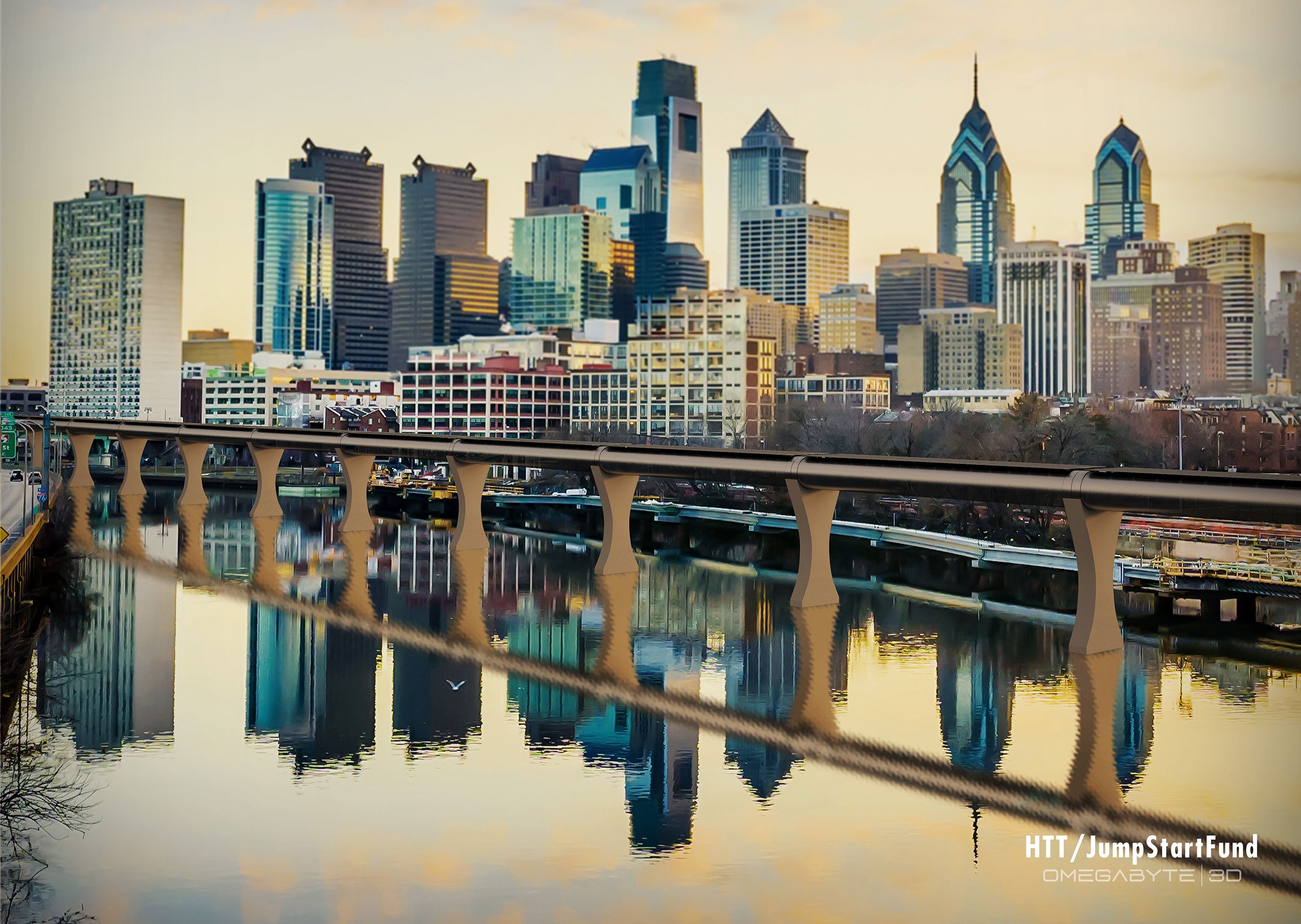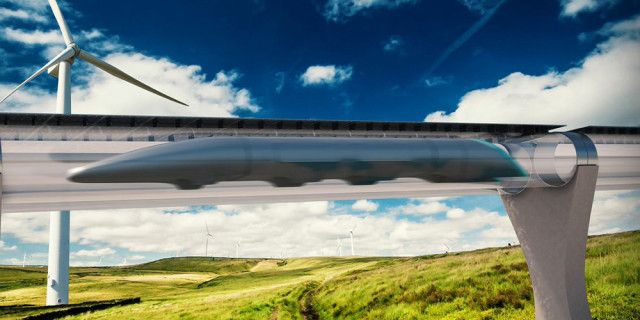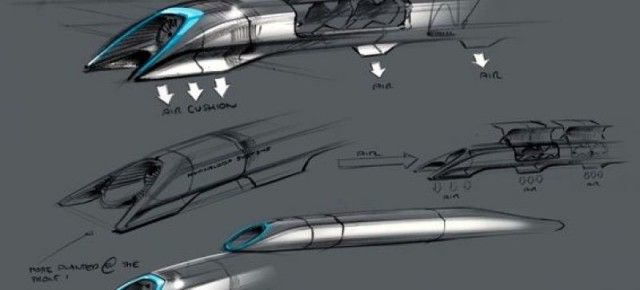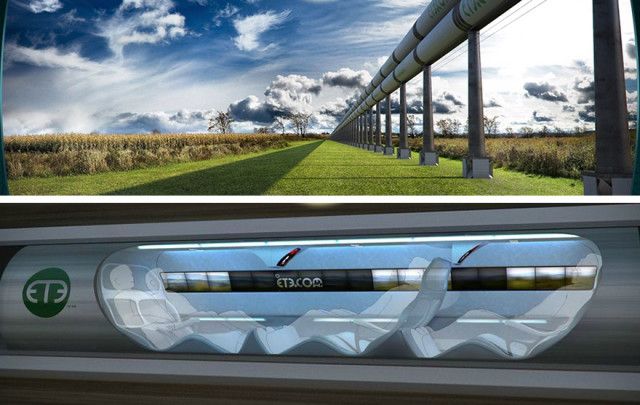Imagine speeding from Los Angeles to San Francisco in under an hour, without leaving the ground. It's not quite teleportation, but it is the next best thing.
From the man who brought us PayPal, Tesla, and SpaceX, it's the Hyperloop — an entirely new mode of transport.
What Is It?
The California High-Speed Rail, a mass transit system set to be completed by 2029, will transport passengers between 24 stations along an 800-mile route at 200 miles per hour. The only problem? The train in question will be demonstrably slower, more expensive, and more dangerous than flying. The entire project will take years to complete, and is widely regarded as a boondoggle.
Elon Musk has a better idea.
At a PandoDaily event in 2012, Musk proposed a "fifth mode of transport," calling it the Hyperloop. He characterized the concept as having immunity to weather and crashes, an average speed twice that of a typical aircraft, low energy requirements, and 24-hour operation capabilities.
Musk was initially very vague in his description, but we've since learned a lot about the Hyperloop and its underlying technology — and it's almost ready for testing.
How It Works
Elon Musk's Hyperloop will run from San Francisco to Los Angeles, moving passengers at speeds up to 800 miles per hour. Instead of driving for five-plus hours, you would spend about an hour on a Hyperloop "pod," which would travel through a tube containing a very special environment.
Let's talk about what that entails.
Musk and his team considered a few methods to make this technology work. The first was an enlarged version of the old pneumatic tubes used to send packages within and between buildings. "You could, in principle, use very powerful fans to push air at high speed through a tube and propel people-sized pods all the way from LA to San Francisco," Musk writes [Broken URL Removed]. "However, the friction of a 350 mile long column of air moving at anywhere near sonic velocity against the inside of the tube is so stupendously high that this is impossible for all practical purposes."
They also considered using a vacuum environment with an electromagnetic suspension. In Musk's words, "The problem with this approach is that it is incredibly hard to maintain a near vacuum in a room, let alone 700 miles (round trip) of large tube with dozens of station gateways and thousands of pods entering and exiting every day. All it takes is one leaky seal or a small crack somewhere in the hundreds of miles of tube and the whole system stops working."
With that in mind, the team settled on a middle-ground solution: a low-pressure system where standard commercial pumps could easily overcome a leak. However, with air in the pod, other issues begin to arise. Namely, the Kantrowitz limit — "nature's top speed law for a given tube to pod area ratio" — forces you to either move slowly or have a huge diameter tube. Otherwise, the capsule will behave like a syringe, pushing the entire column of air through the system. To circumvent this problem, Musk came up with a clever workaround: mount an electric compressor fan on the nose of each pod that actively transfers pressure from the front to the rear of the vessel, cheating the Kantrowitz limit.
That also solves another problem, which is how to suspend the pods with as little friction as possible. If each pod produces and rides on a cushion of air (picture an air hockey table), friction will stay low and the tube will be easier to build because it won't have to suspend the pods itself.
As for power, Musk says a battery pack will run the electric compressor fan, and an external linear electric motor (similar to the one in the Tesla Model S) will accelerate the pod, giving it a boost every 70 miles or so.
Costs
New infrastructure is always expensive. But according to Musk, the pods and motors are relatively inexpensive (several hundred million dollars at most) compared to the tube itself, which could cost several billion dollars. However, the Hyperloop still beats the California High Speed Rail, which will cost several tens of billions of dollars.
Beyond that, by building it on pylons, you can mostly avoid the need to purchase land by building alongside the mostly straight California Interstate 5 highway. Even with minor deviations, it will only minimally disrupt farmland and other property, which Musk compares to a tree or telephone pole.
The Future, Ready for Testing
Until recently, this whole project seemed like a bit of a pipe dream. However, last month, Elon Musk announced on Twitter that he will be "building a Hyperloop test track for companies and student teams to test out their pods."
In other words, Elon Musk wants to build a facility in Texas where engineering students can race 800 mile per hour death traps around an enclosed track, which frankly sounds incredibly entertaining. The track would be a five-mile loop, and one trip around it would take about 22.5 seconds.
We don't yet know exactly when this Hyperloop prototype will go up, or many of the details of its design. Regardless, it's exciting to see how much progress is being made on this technology — and it should be interesting to see it in action. If this can genuinely provide a better mode of transportation than what's currently available, it could change a lot of lives.
What do you think of the Hyperloop? Is it something you would consider using for a long commute? Let us know your thoughts in the comments!
Image Credit: SpaceX [Broken URL Removed]




